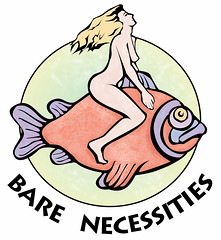 Social nudity refers to nudity in a communal setting. Nudity or nakedness generally is the state of wearing no clothing but the term nudity is sometimes used to refer to wearing significantly less clothing than expected by the conventions of a particular culture or situation and in particular exposing the bare skin in not an entirely private context. Social nudity may or may not involve public nudity which refers to a person appearing nude in a public place or to be seen from a public place. Nudity in the privacy of a person’s home or private property is not public nudity. Nudity at nudist or naturist clubs or resorts is social nudity but also not public, since it also takes place on private grounds. Naturism promotes social nudity, but mostly on private properties or officially sanctioned public areas. Social nudity may be sexualized or non-sexualized nudity. In the practice of conventional nudism/naturism, nudity is non-sexualized and presented as wholesome, nurturing and even family oriented. There is however a fringe element within the nudism movement where social nudity is highly sexualized. At nudist gatherings of these groups sex is a prominent part and may include the sharing of sexual partners, having multiple sexual partners and/or engaging in sex while in the company of or while being watched by others. Participants are commonly termed “swingers”. While considered “unconventional” this behavior still falls within the concept of social nudity.
Social nudity refers to nudity in a communal setting. Nudity or nakedness generally is the state of wearing no clothing but the term nudity is sometimes used to refer to wearing significantly less clothing than expected by the conventions of a particular culture or situation and in particular exposing the bare skin in not an entirely private context. Social nudity may or may not involve public nudity which refers to a person appearing nude in a public place or to be seen from a public place. Nudity in the privacy of a person’s home or private property is not public nudity. Nudity at nudist or naturist clubs or resorts is social nudity but also not public, since it also takes place on private grounds. Naturism promotes social nudity, but mostly on private properties or officially sanctioned public areas. Social nudity may be sexualized or non-sexualized nudity. In the practice of conventional nudism/naturism, nudity is non-sexualized and presented as wholesome, nurturing and even family oriented. There is however a fringe element within the nudism movement where social nudity is highly sexualized. At nudist gatherings of these groups sex is a prominent part and may include the sharing of sexual partners, having multiple sexual partners and/or engaging in sex while in the company of or while being watched by others. Participants are commonly termed “swingers”. While considered “unconventional” this behavior still falls within the concept of social nudity.In some circumstances, public nudity may be legal. For example, in Europe, Canada, Australia, the U. S. and other countries there exist public areas designated as nude beaches. A nude beach is a beach where the users generally are nude. There are however also clothing optional (CO) beaches where persons are permitted to be completely nude but it isn’t required. In such places a person would not face legal prosecution merely for being nude. A top free beach or topless beach is one where upper body clothing is not required for women or men, but a swimming costume covering the genitals is required. In such places a person could face legal prosecution merely for being completely nude (uncovering the genitals) since complete nudity is not officially permitted.
Outside of those areas, community and legal acceptance of public nudity varies considerably. To avoid offending the public in general, public authorities maintain what are sometimes called “standards of decency”. What falls outside these standards is usually termed “indecent exposure”. Indecent exposure is the display of nude parts of the human body that, according to the standards of the local cultural norms, should be clothed. These standards, however, vary with time and place. Most people object to public nudity in a sexualized context, or when children are an issue. Some people regard those who appear nude in public as trying to draw attention to themselves. If the attention seeking is to oneself, it may be referred to as exhibitionism. Exhibitionism is the psychological need and pattern of behavior to exhibit naked parts of the body to other people.
There are also some people who disrobe in public to attract attention or publicity to themselves or to a cause they support. There are also those who engage in “streaking”. Streaking is a non-sexual act of taking off one's clothes and running naked through a public place, often the sites chosen are sporting events. There are also others who spontaneously disrobe in public, as an expression of their freedom and the shedding of inhibitions, an example being skinny dipping. Skinny dipping is swimming in the nude.
There are some people who object to any public exposure of a naked human body, on moral, religious or decency grounds, and usually regard the exposure of a naked body as inherently sexual. Some people are Gymnophobic. Gymnophobia is a fear or anxiety about being seen nude and/or about seeing others naked, even in situations where it is socially acceptable.
The degree to which a person can be exposed to be considered “indecent” varies with cultural standards. At one extreme is the former Taliban regime in Afghanistan which considered the exposure of any part of a woman's body in public as indecent, and required all women to wear a burqa, an all-enveloping tent-like outer garment designed to be worn by women in public. A less extreme example is the requirement of some religions for women who enter a church to wear “modest” clothing and to cover their heads. Modesty comprises a set of culturally and/or religiously determined values that relate to the presentation of the self to others.
In recent times, public nudity is becoming more common with nude sporting events and other activities being held. These include naked hiking (Free Hiking), naked walking, naked running, naked boating, etc. All are sub-sets of the modern form of social nudity. There is also the World Naked Bike Ride, an international event in which participants plan, meet and ride together en masse in the nude on human-powered vehicle to protest oil dependency and celebrate the power and individuality of human bodies.







No comments:
Post a Comment